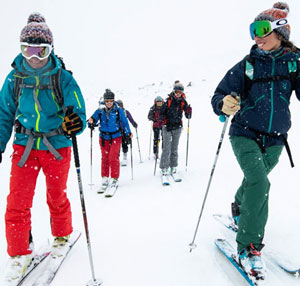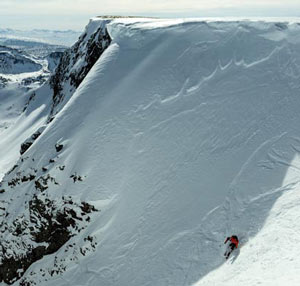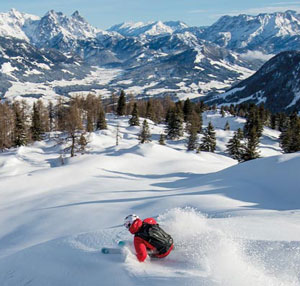Beginners Guide To Skiing Powder
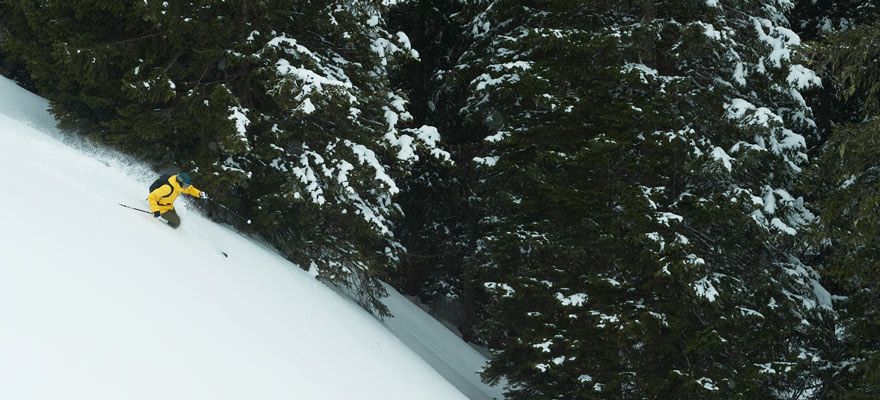
Nothing quite compares to the feeling of floating through untouched powder. There's a reason that those who have experianced it spend their time chasing fresh snow. However, if you've never taken the plunge into the deep stuff, then we've put together this quick guide to help get you started.
For those transitioning from piste to powder, whilst not drastically different, the reality is that if you try and ski off-piste like you would usually ski on piste, you aren’t going to have a great time. Fortunately it only takes a few technique tweaks, the right gear and a little practice before you are able to slide down slopes in waist deep snow.
This short guide will take you through what to look out for when choosing equipment, some basic technique, along with some safety tips.
Guide to Powder Skiing Equipment
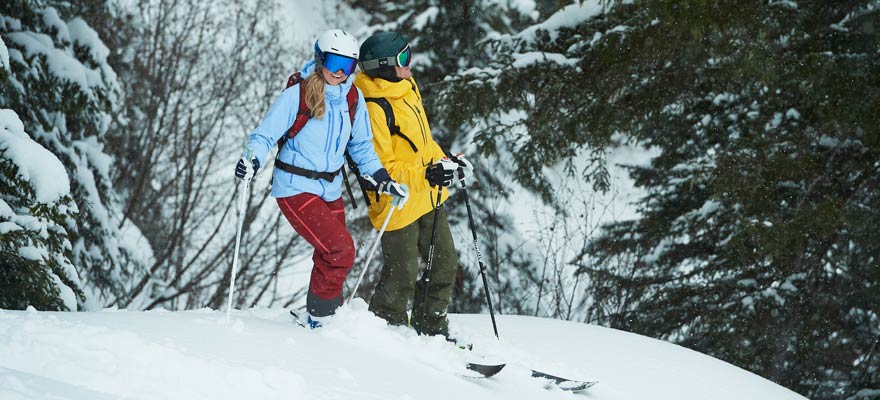
Skis
The first difference you will notice between a piste ski and a powder ski is the waist width. Powder skis are much wider in width, with thoroughbred Powder skis typically starting at least 110mm and above. A wider ski will offer much more float in soft snow in comparison to a typical piste ski width.
Whilst it would be the dream for many of us to only ever ski powder, the reality is that your skiing will most likely be a mix of piste and off-piste. As a rough guide, for those who are primarily skiing on piste but also want a reasonable amount of float in soft snow, a minimum 80mm waist width is a good starting place. If you are skiing on piste as much as you ski powder, then a waist width of at least 90mm+ is usually a good starting point.
The second difference that you’ll spot with powder skis is the profile. Traditionally skis will have camber, with slight rocker in the nose. This essentially means the tail and tips of the skis sit on the snow with the end of the nose lifting slightly, and the middle section (where your bindings are mounted) lifting off the snow when unweighted. This gives you extra bite, pop and power when you’re carving on the piste. Powder skis will have much bigger front rocker, meaning the nose of the skis lift quite far off the snow. The benefit of this being better float and turn initiation.
Clothing
Unless you are touring to get to powder lines, then clothing for off-piste skiing is straightforward enough.
Although most ski jackets do now come with one, a snow skirt is absolutely essential, and bib pants are very highly recommended. When you inevitably get out of shape and end up taking a face full of snow in deep powder, it is going to be pretty miserable if the inside of your jacket fills with snow.
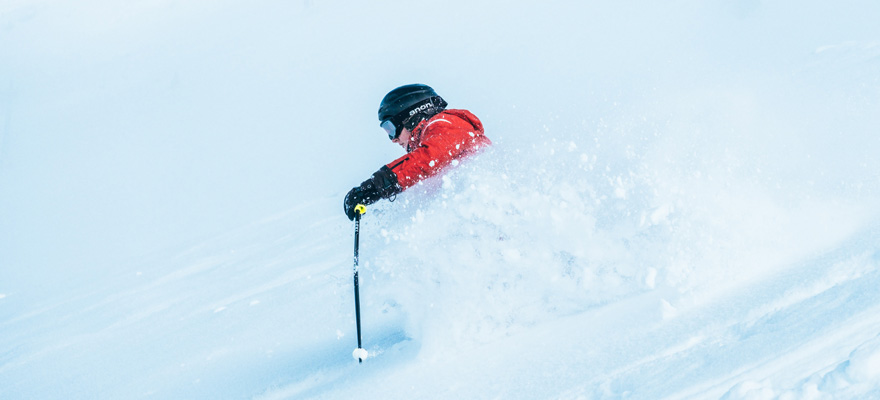
You also want to make sure that your pants and jacket are waterproof and durable. You’re going to be covered in snow by the end of your line, so having total waterproofness is key to all-day comfort. The importance of durability increases depending on the kind of lines you will be taking. If you are going to be taking lines through trees, then you need to make sure your jacket is durable (GORE-TEX Pro is one of the best options) as if you glance any branches, you could quite easily put a tear in your jacket.
Accessories
A solid pair of gloves and goggles go a long way, but when it comes to accessories for powder skiing, the biggest additions you might need to make compared to your usual skiing gear will be to do with safety.
A transceiver is probably the most crucial piece of kit when venturing into the backcountry. It is a means for you to be located should you get caught in an avalanche, but also allows you to search for others. You should never venture into the backcountry without one.
Next on the list would be a probe, which is the fastest way of pinpointing an avalanche victims location. It means you are able to begin digging accurately, with the final key piece of equipment, a shovel.
The shovel, probe and transceiver are all used in conjunction with each other in order to make the fastest rescue possible. Training from a qualified instructor is highly recommended.
If your budget will stretch a little further, then an ABS backpack is a really valuable piece of kit, becoming increasingly important if you are skiing in high-risk and avalanche prone areas.
Guide to Powder Skiing Safety
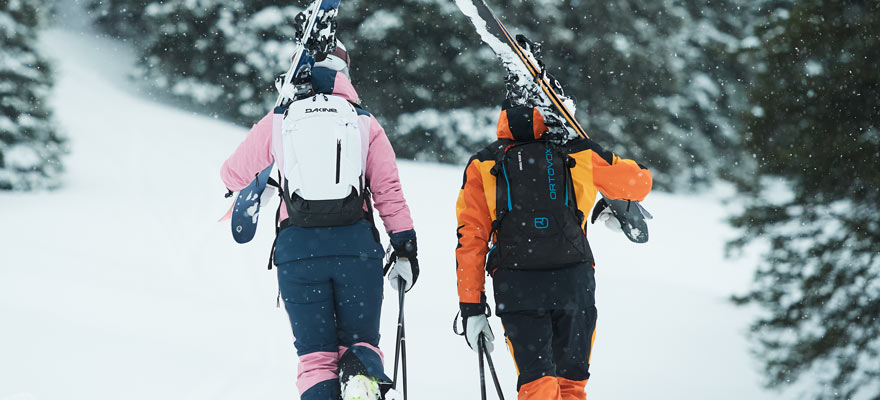
When it comes to staying safe off-piste there are a few things to look out for, with the main being avalanche safety. Before venturing on any off-piste expedition, it’s worth looking into your insurance policy as most don’t offer cover for off-piste as standard.
The best thing you can do to protect yourself is to take an avalanche and backcountry safety course. This will give you the basic knowledge of what to look out for and how to act in the case of an avalanche. It will also give you essential technique and practice with using your transceiver, probe and shovel.
Always make sure that you check the conditions before heading out, tell somebody where you are heading, and never go alone. For your first trip it is best to go out with a qualified guide or instructor to not only give you tips on technique, but also help offer knowledge on the area.
Another danger to be aware of is tree wells. They are more common in Canada and North America than Europe, but are still worth researching as they can occur anywhere that has heavy snowfall and trees. After heavy/prolonged snow, a tree well forms at the base of a tree. This is caused by the lower branches preventing snow to accumulate densely around the trunk. When you come close to the edge of the well, especially after a big snowstorm, the snow can collapse and lead to you falling into the well. If you are able to take your skis off and get upright using either the tree or your poles in an X shape, you may be able to get yourself out. Otherwise, this is where skiing with others is essential as your group will have to help either dig or pull you out of the well.
Basic Powder Skiing Technique
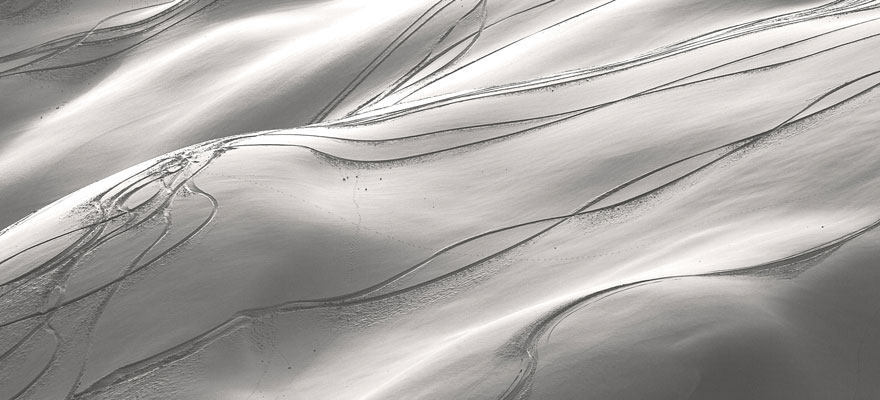
Whilst different to your on-piste skiing technique, with some small changes and plenty of practice, you will be floating down powder slopes before you know it. Here are a couple of pointers to get you started:
- Change your mentality - one of the key aspects is to be prepared to go faster than you think you should be able to. It is important pickup speed as the faster you go, the more you will float on top of the snow and the easier it will be to turn. The good thing about powder is it’s soft, so falling hurts a lot less than on-piste (although care must still be taken, especially with hidden rocks under the snow surface)!
- Create Rebound - on piste, your focus is on turning side to side whereas when you are in the powder, you also have to think about your vertical movement up and down through the snowpack. You create rebound by flexing and extending with the idea being you turn when your skis rise up after compressing. Focus on loading and unloading your skis.
- Keep your weight central - whilst it can seem like you need to lean back to lift your tips out of the snow, this actually works against you as you will end up sinking your tails into the snow, making it much harder to turn. With the right pair of skis, and some momentum, you will find yourself floating just fine.
- Straighten out your turns - you want to keep as much speed as possible, and simply won’t be able to turn as quickly as you could on piste in most cases. Smooth, long radius turns are the way to go.
About the Author:Huw Saunders - Outdoor ExpertGrowing up in rural Wales, Huw has been immersed in the outdoors for as long as he can remember. If not surfing the Welsh coast, he can now usually be found either running or hiking in the Peak District and through the winter, tries to get out to Europe to ski as much as possible. |

